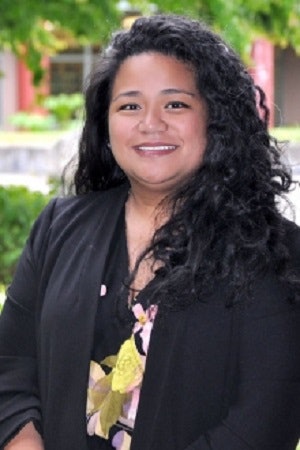The Center for Community College Student Engagement’s new report analyzed the impact of guided pathways practices at community colleges across the country.
Its research, “Building Momentum: Using Guided Pathways to Redesign the Student Experience,” used student and faculty perspectives. More than 100,000 community college students and 7,000 community college faculty members were used as part of the report.
The guided pathways practices are “designed to help colleges improve rates of student completion, transfer and attainment of jobs with value in the labor market,” the report said.
“Guided pathways has been a monumental movement when it comes to academic advising,” said Dr. Robert Garza, president of Alamo Colleges District-Palo Alto College. “The connection, entry, progress, completion and then ultimately looking at the employment or the transfer of the student. It’s really giving colleges an idea to look at the advising life of a student in a holistic way from the point of entry to the point of exit to when they transfer or go onto their employment.”
 Dr. Rosie Rimando-Chareunsap
Dr. Rosie Rimando-ChareunsapOver the years, higher education institutions have used the “cafeteria model,” meaning students enter college with a number of options to choose from and spend time “making choices and taking courses to hopefully end up with a degree or ‘square meal’ at the end of the cafeteria line,” according to Dr. Rosie Rimando-Chareunsap, president of South Seattle College.
“We are finding that that design has not been conducive towards completion,” she said. “So really focusing on outcome focus, degree and certificate programs, organizing students’ course taking and their experiences with course taking and course selection in a way that’s structured and supported but also flexible and adaptable for students. Those are all important components of guided pathways.”
As of fall 2019, more than 300 colleges have implemented guided pathways reforms as part of formal national or state initiatives, the report found.
Guided pathways also aims to create an equitable environment within institutions.
“By looking at systemic change for the purposes of closing racial achievement gaps or closing those equity gaps, it really brings people to the table to do guided pathways work at the colleges,” said Rimando-Chareunsap.
Dr. Davis Jenkins, senior research scholar at the Community College Research Center, said colleges must look at the changes and see how they affect underrepresented groups such as students of color, working adults or first-generation students.
“We are finding that even colleges that have made dramatic changes and seen overall improvements in results still find gaps in achievement, especially by race,” he added. “So scrutinizing the student experience from an equity standpoint is going to be more important for colleges, both to meet their equity missions but also to stay viable as a business in this competitive environment that they are in.”
Though early in the process, the impact of guided pathways practices has already been felt.
Across the country, 48% of students had someone talk to them about how long it would take to achieve their goals. On the other hand, 70% of respondents from South Seattle College, who adopted the guided pathways model, had a similar experience, according to the report.
 Dr. Davis Jenkins
Dr. Davis JenkinsOf those schools with implemented guided pathways practices, 68% of entering students reported being required to meet with an advisor before class registration. Additionally, 67% of students reported that they were required to follow an academic plan which specified needed courses and 79% said those courses were readily available to them, the research found.
However, challenges still face institutions as they implement guided pathways.
Only 44% of entering students said that someone at their college had talked with them about their career path. Additionally, 41% of entering students reported using their college’s website to explore career options, according to the report.
In terms of faculty members, 49% were not involved in their college’s guided pathways efforts while 49% desired more professional development opportunities to understand more of their role in the initiative, the research said.
To create awareness of guided pathways and further understand student and faculty needs, the report also provided examples of conversations to be held by administrators. The questions include:
- “Are we building an environment in which all students feel welcome and validated prior to their first day of class?”
- “Does every student in every program have a clear plan for program completion and employment or transfer?”
- “How are we identifying and then serving underprepared students? Are we using corequisite support rather than stand-alone developmental courses?”
Overall, the report recommended that community colleges should focus on changing the student experience and increasing faculty and staff engagement.
As part of the solution, community colleges must ensure that students are getting experience in addition to learning in the classroom, according to Jenkins.
“You aren’t going to be able to do that without the central involvement of faculty,” he said. “Our experience is when you engage faculty, empower them and support them, they really come up with creative ideas. I think this points to the next body of work that colleges have to do. Really double down in engaging faculty but empowering them to take the lead in how to enrich learning, especially in the first terms.”
Sarah Wood can be reached at [email protected].


















